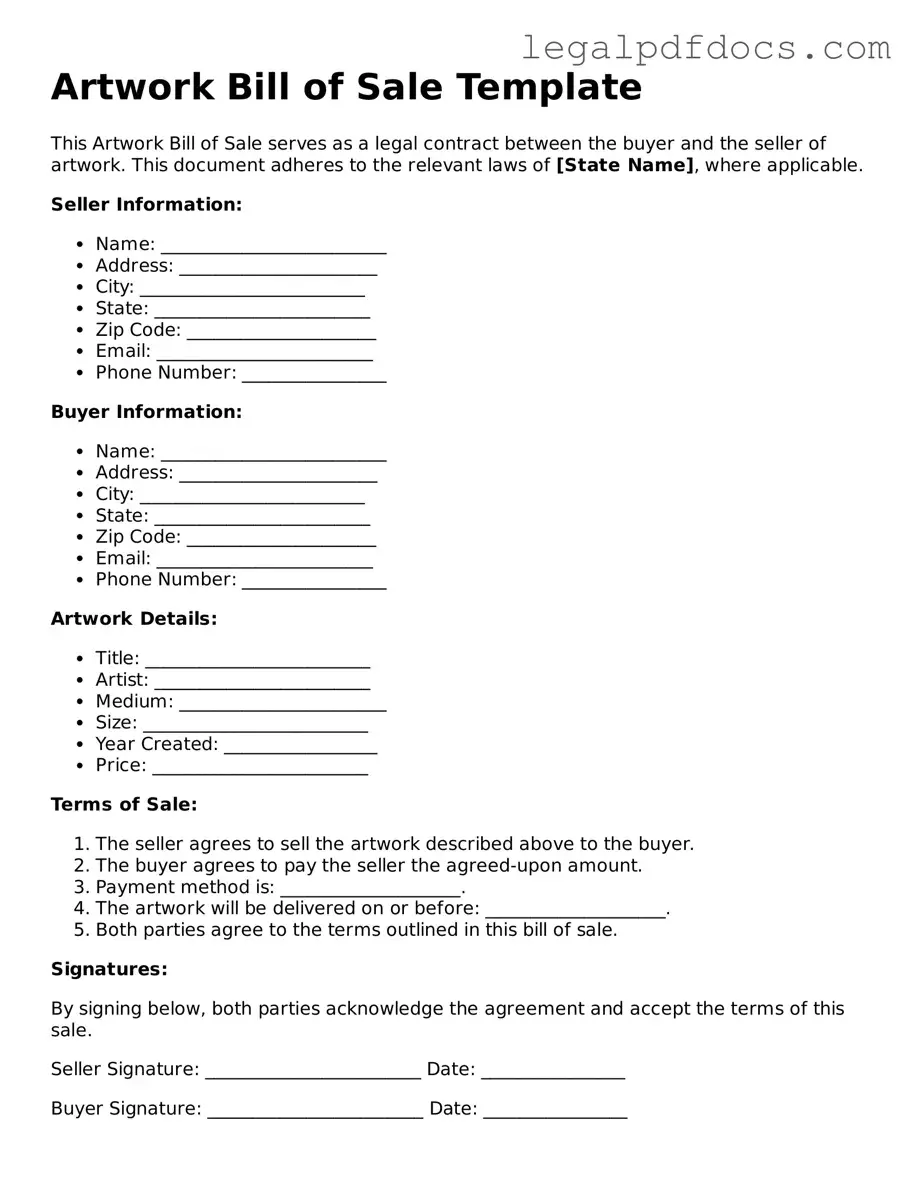Artwork Bill of Sale Template
The Artwork Bill of Sale form is a crucial document that serves as proof of the transfer of ownership for a piece of artwork. It provides essential details about the transaction, including the buyer, seller, and a description of the artwork. Understanding this form can help ensure a smooth and transparent exchange, protecting the interests of both parties involved.
To facilitate your transaction, consider filling out the Artwork Bill of Sale form by clicking the button below.
Open Artwork Bill of Sale Editor Here
